
views

Cut off the sharp leaf tips with an artichoke knife or scissors. This is optional, but it makes eating the artichoke "much" easier later on.

Don't boil the artichoke. Artichokes are steamed. You may place it in a few inches of water and bring the water to a low boil, but only a low boil, then cover. Do not cover them entirely, just a few inches. If you cover them too much with water they will turn brown. Steam for about 50 minutes. You will know when it is done when you can pierce the stem with a fork quite easily - it should feel like you are piercing a soft fruit. You can also microwave them, individually wrapped in plastic, for 8-15 minutes, or put them in a pressure cooker for 20 minutes. You know it is done when you pull at a leaf and it comes away with little resistance.
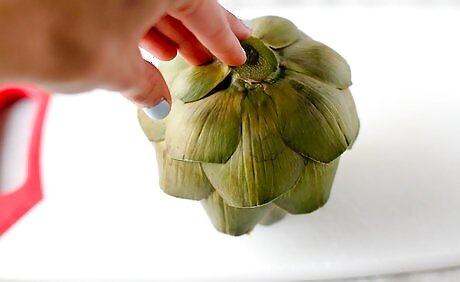
Drain them upside down.

Take the outer leaves off one by one and hold like a potato chip. Take a look at it - you should be able to see the edible part pretty clearly. It's lighter in color and down at the base of the leaf, where it was attached to the heart.

Coat the tip (the part that was attached to the heart of the choke) in whatever dip has been offered. Some common dips are: Mayonnaise (try mixing with a little bit of balsamic vinegar or soy sauce) Mixture of garlic and butter Mixture of oil, salt and vinegar Melted butter Ranch dressing

Gently nibble or scrape off the tender bits of the bottom of the leaf by putting the leaf in your mouth, closing your teeth on it, and pulling the leaf outwards. The "good part" will detach from the more woody, fibrous part of the leaf easily and leave the tasty bit for you to savor.
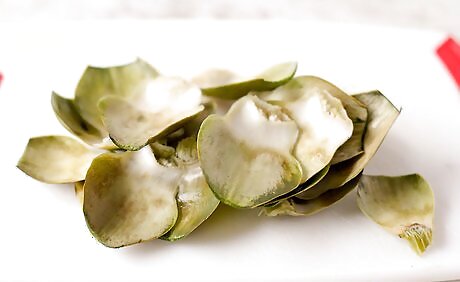
Discard the leftover leaves in a container or in a pile on your plate.
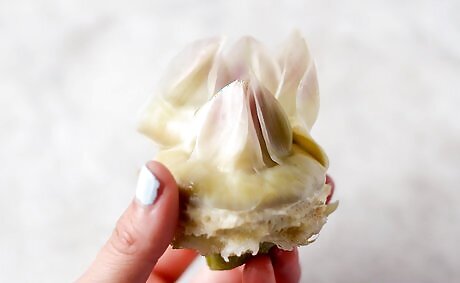
Continue until you get to the smaller center leaves that don't have much meatiness to them. These leaves look a bit different than the outer leaves and often have a translucent quality with a bit of purple on them.
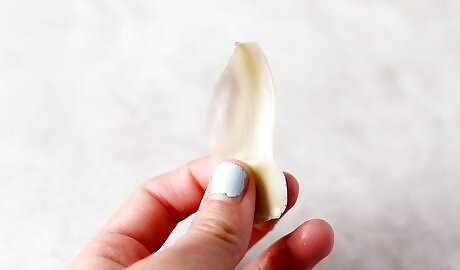
Pull off the center leaves. Depending on how well-cooked the artichoke is, you can sometimes lift off the smaller inner leaves all together for one last dip in the sauces and bite the ends off delicately (but don't eat the sharp tips). They cover a finer, almost hairy growth just on top of the heart of the artichoke. Some people call this part the "choke," which is what you will do if you eat it, as it is very prickly.
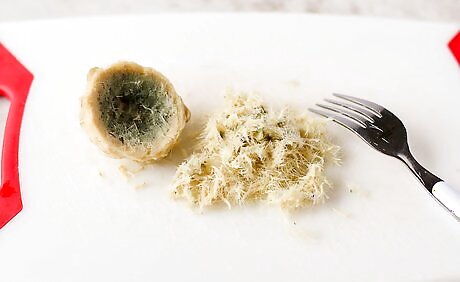
Remove the choke using gentle strokes with a spoon. If cooked well, the choke will scrape off easily. What remains after the choke is removed is the coveted heart. Many people will try different implements, but a spoon is best and leaves a clear clean heart with no choke left on it.
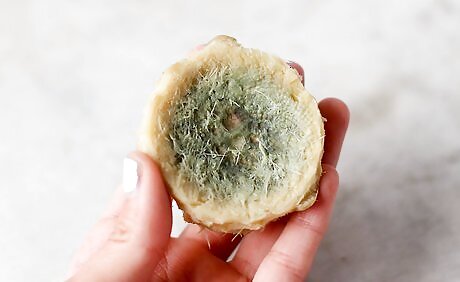
Eat your heart out. The heart of the artichoke is the most prized portion and often the only part restaurant chefs use in their recipes, but at home you can savor the whole artichoke experience. Enjoy.




















Comments
0 comment